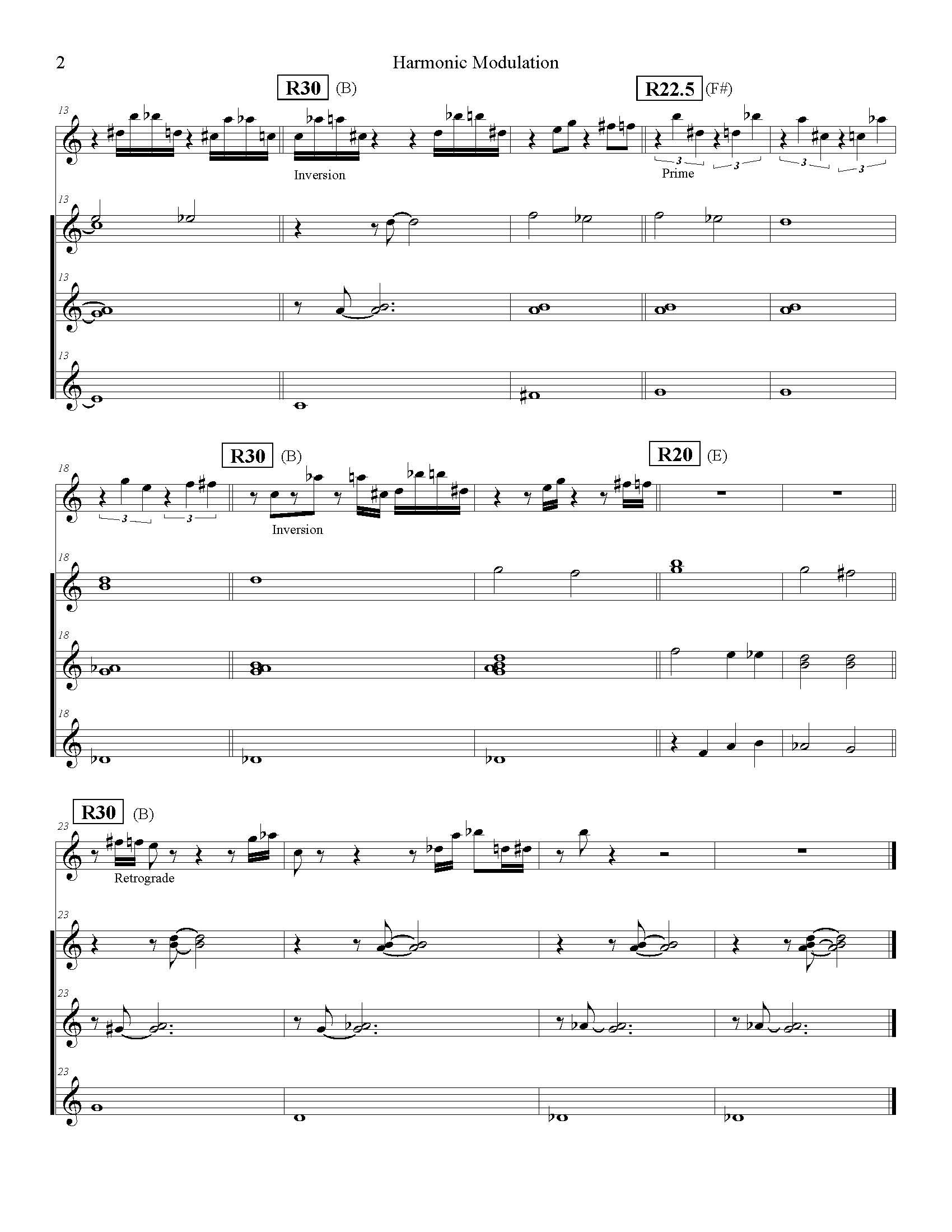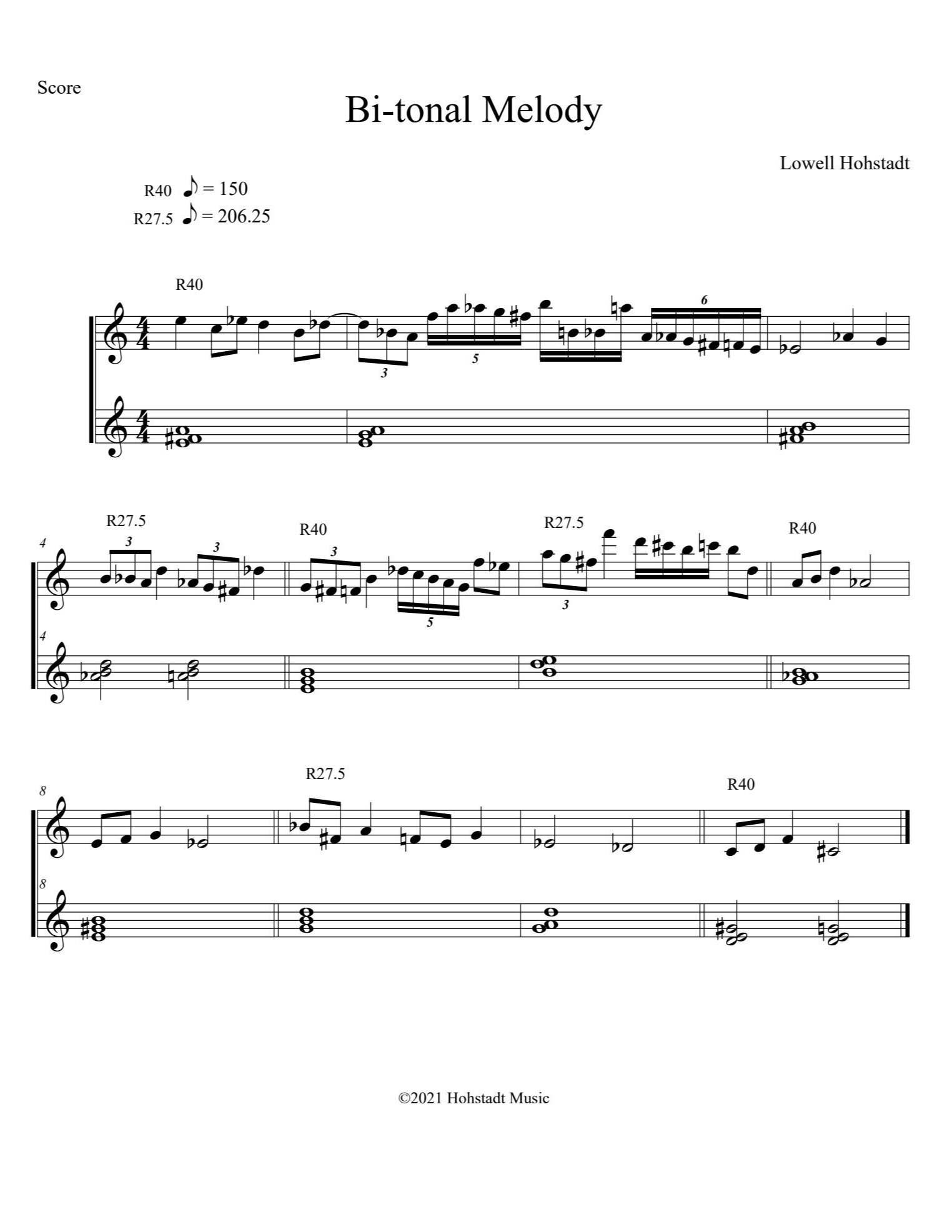Diatonic, Chromatic, Microtonal Serial
This experiment deals with the same 10-note pattern used in the Chromatic/Serial example above, in three sections of the overtone scale: 1) the lowest ten nodes [diatonic/harmonic], 2) the middle ten nodes [chromatic], and 3) the highest ten nodes [microtonal]. Using the same pattern in each of the sections created the same contour of the theme, but not the same intervals, since the intervallic differences of the lowest ten notes are wide and the intervallic differences of the highest ten are much smaller.
What I found interesting is that the motif could be recognizable, even feeling like an exact reflection, when comparing it against each of the three ranges. The intervallic differences between each of the ranges of the scale didn’t seem to alter the recognizability of the pattern.
From this experiment, perhaps a new way of dealing with motivic development can be obtained: what I call ‘motive ballooning.’ Consider drawing a motif on the outside of a balloon with a marker. Then blow the balloon full of air, and the written motif expands. Let the air out a little, and the motif shrinks, etc. The motif is still recognizable, even though the size of the intervals change.
In this piece, I used two different tempos in the family of R20, 75BPM and 120BPM, so each of the three parts of the R20 scale had eight versions of the motif: Prime, Inversion, Retrograde, Retrograde/Inversion in 75BPM and 150BPM. This, all in all, gave me a total of 24 different versions of the motif, each of them only used once, in the traditional serialist ethos.
Even though serialism is employed, each of the three sections of the overtone scale are harmonically and tonally congruent, as all notes exist inside the same overtone scale. Harmony and Melody or, one could say, Vertical and Horizontal properties are one and the same.
(For more information, please see my article Integrated Frequency)










